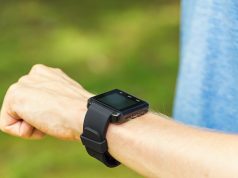High sensitivity, specificity demonstrated for atrial arrhythmia
WEDNESDAY, Oct. 2, 2019 (HealthDay News) — A smartphone-operated one-lead electrocardiography (1L-ECG) device with an integral algorithm can diagnose atrial fibrillation (AF) and atrial flutter (AFL), according to a study published in the September/October issue of the Annals of Family Medicine.
Jelle C.L. Himmelreich, M.D., from the University of Amsterdam, and colleagues recruited consecutive patients who underwent 12-lead ECG (12L-ECG) for any nonacute indication to validate a smartphone-operated device with an integrated algorithm for AF. Patients held a smartphone with connected 1L-ECG while the 12L-ECG was being performed. Blinded cardiologists assessed all 1L-ECG recordings and the 12L-ECG recordings in random order. A total of 214 patients were included from 10 general practices.
The researchers found that in 23, 44, and 28 patients, the 12L-ECG diagnosed AF/AFL, any rhythm abnormality, and any conduction abnormality, respectively. The sensitivity and specificity for AF/AFL were both 100 percent with the 1L-ECG as assessed by cardiologists. The AF detection algorithm had 87.0 and 97.9 percent sensitivity and specificity, respectively. The 1L-ECG as assessed by cardiologists had 90.9 and 93.5 percent sensitivity and specificity, respectively, for any rhythm abnormality and 46.4 and 100 percent, respectively, for any conduction abnormality.
“A smartphone-operated, 1L-ECG device is a reliable instrument for detecting AF when assessed by the internal detection algorithm, and even more so when assessed by cardiologists,” the authors write.
Copyright © 2019 HealthDay. All rights reserved.








